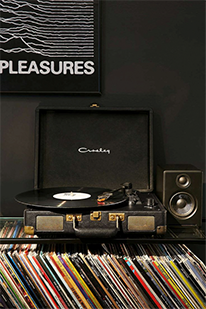
Music has always played a huge role in marketing. We can all understand and agree that music is a natural influencer of mood and attitude. So when studying how music is used in advertising, the first aspect of its use we should focus on is psychology. According to hundreds of studies (such as McGill “Musical Chills”), listening to music effects our mental health and releases dopamine. It can turn you up, anger you, calm you down, sadden you, excite you, scare you, and make you feel.
There is a lot going on in our brain when we listen to music. Music memories are stored in a different part of the brain than other types of memories, so that is why you can relate music to memories and memories to music. I read an interesting study I want to share here. “Dr. Christoph J. Ploner, Carson Finke, and Nazli Esfahani at the Department of Neurology at the Virchow campus in Berlin, Germany have examined a man who has lost all of his memories but has retained his ability to remember and learn songs. He has amnesia so severe that he cannot remember his professional or personal past (retrograde amnesia), family or friends, or acquire new information (anteretrograde amnesia). Despite this condition, his musical memory remained intact. He displayed not only the ability to remember musical pieces from his past, but also the ability to remember musical pieces that he had never heard before the tests.” The same logic of music storage can be applied to Brands.
Watching TV the other day a commercial came on for the new iPhone 8.
I was sitting with a buddy who is an android guy and never speaks highly of apple. After watching that commercial, almost subconsciously he said “that song is awesome… the new iPhone looks cool.” Even when it isn’t such an obvious positive connection like that example, music in advertisements make you feel certain ways and remember certain specificities of the advertisement. It’s hard to pinpoint how the background music in an advertisement makes you feel or think. How do you think the music in the iPhone ad was intended to make you feel? As the music builds up it builds anticipation of what you are watching and listening to. The music with the visuals are expressing an artistic, experimental and cutting edge vibe to convey positive associations with the product such as “innovative” and “new.”
And music isn’t only used for that positive psychological connection or to woo your mood. Music in advertising is also used to increase the frequency in which you think about a product or brand. In consumer terms, annoy you. Many brands will select a current pop culture song that is top of the charts, or a classic song that everyone knows, and try to associate that song with their brand by pushing that commercial to a specific targeted audience on repeat. Can you think of any examples where a brand has done this? It can be annoying, but it works. How about Hyundai recently using “Sweet Caroline” in their car commercial. Now when you hear Sweet Caroline, you think of that annoying guy stuck in traffic in his Hyundai. At least I do…help me.
According to sources, you are hit with 10,000 messages every single day. Put music behind the message and now you are processing the message and relating it to the music. I’ll bet that message will stick out more than most. Especially if you love music as much as I do.
There are layers behind the psychology and methodology of music in advertising. Not only is the tonality, notes, lyrics, tempo and pitches a huge factor of the influence the music has on consumers, but also the artists that represent the music and the credibility or association that artist gives you for that brand. The strategy behind a brand using an artist for marketing sponsorship is a bit different then linking music with advertising. If you would like to read more about artist sponsorships, come check my next Music in Marketing blog post.

